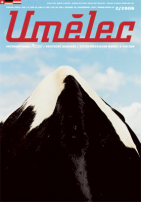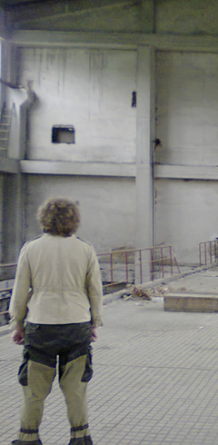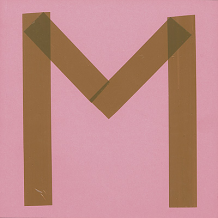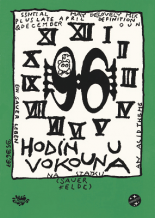| Revista Umělec 2006/2 >> 20 facts you should know about Switzerland | Lista de todas las ediciones | ||||||||||||
|
|||||||||||||
20 facts you should know about SwitzerlandRevista Umělec 2006/201.02.2006 Thomas Haemmerli | Switzerland | en cs |
|||||||||||||
|
1
Four cultures Switzerland has seven and a half million inhabitants, most of them speaking a German dialect. One canton speaks French, another one speaks Italian. In some mountain valleys, the Latin-derived dialect Rhaeto-Romanic still survives. It is kept alive with subsidies, because multi-lingualism is one of the nation’s fundamentals. 2 Nation of immigrants Switzerland is a nation of immigrants. In the mid-sixties, the country recruited Italian workers, Hungarians came in 1956, then in 1968 Czechoslovaks, in the seventies many Albanians from Kosovo, in the eighties Tamils, and since we now have freedom of movement within the European Union, many Germans come because of better salaries. 3 Resistance and Reaction The scandal cost one million Swiss francs and reminded the broad public of artistic production. Thomas Hirschhorn (born in 1957), whose works castigate globalization and capitalism, showed his exhibition “Swiss Swiss Democracy” in 2004 at the Centre Culturel Suisse in Paris. The event made it into the tabloid press, because an actor lifts his leg and pretends to piss on a likeness of the national conservative minister of justice, Blocher. The militia parliament, which was having its regular meeting at the same time, addressed the issue resulting in a reduction of cultural funding from the annual Swiss budget that had financed the Hirschhorn exhibit by one million francs (about 660,000 Euros). 4 Collector Blocher In 1992, the Swiss media, the political parties, the economy and the banks wanted to join the European Economic Area. Switzerland would not have joined the EU, but it would have been associated economically. Virtually on his own, Christoph Blocher won the plebiscite against the establishment, since he was the most important politician at that time. Farmer and jurist by profession, entrepreneur and self-made billionaire, Blocher took over the conservative SVP (Farmers and Trade Party) and turned it into an aggressive right wing party that fights the EU, taxes and immigrants. Because of Blocher’s election and plebiscite victories, the parliament appointed him justice minister three years ago. Blocher probably welcomed the reduction of the subventions, because he is opposed to any kind of cultural support. As an art patron he distributes money himself, and he owns the biggest collection of works by Albert Anker. That fits perfectly, because Anker (1831-1910) painted a rural Switzerland between idyll and the tribulations of life. 5 Two humiliations On his way to the top, Blocher took advantage of two events that shook Switzerland. Relatives of murdered Jews, who were searching for traces of missing accounts, were rudely turned down by the banks. The lobby organization World Jewish Council vigorously adopted the issue. The Swiss people had to witness how their Bundesrat, the honorable government of seven ministers that only meets on Wednesdays, was hopelessly overrun by the speed of modern politics. Switzerland was set under economic pressure until a settlement was reached, and banks and the economy paid about 1.5 billion dollars. Hence, the broad public had to notice what critical historians had claimed since the seventies: The self-awareness of a heroic Switzerland, a humanitarian role model during war times, was contradictory to the historic facts. The second humiliation to the Swiss psyche happened in 2001, when the pride of the nation, Swissair, went down. The airline, which had always been amongst the best, was bankrupt. It was an enormous shock. The country that sees itself as an extremely reputable and hard working one, better than all the others, is becoming more and more normal. 6 The mental defense of the country For almost seventy years, Swit-zerland saw itself as a special military case. In the thirties, being surrounded by the Axis powers, they developed the ideology of the “mental defense of the country,” that emphasized values like blood and soil, unity, rural character, the ability to put up a fight, and democracy. Thus, the Zeitgeist was served, but at the same time the country could set itself off against Germany. The military strategy provided that the army let the advancing Germans take over the plains, in order to entrench themselves in the “Réduit,” the gigantic bunker systems in the mountains, and to blow up the Gotthard tunnel, the most important north-south link. The will for military defense and the pragmatic politics of the Bundesrat, that often met German wishes, as well as Germany’s interest in an intact Switzerland as a financial center with war industries and the Gotthard tunnel made it possible for the country to muddle its way through the war years without occupation. 7 Anti-communism and snooping After the war, the “mental defense of the country” was continued seamlessly. The enemy was now the Eastern bloc. Every schoolchild learned that the heroic Swiss had deterred the Nazis. The militaristic character of the country supported this saga: Every halfway useful Swiss had, until his old age, to serve in the military for three weeks per year, every citizen had his uniform, his rifle and ammunition at home. The militia army had an immense meaning, because it was impossible to advance in one’s professional career without also pursuing a career as an army officer. The leading elite was usually at the same time politician, economic leader, and a high ranking officer (Blocher is still part of this model series). Criticizing the army was considered denigration of one’s country, and until the mid-eighties, Switzerland supported a secret spy organization that started a file about everybody who was noticed as being critical. The work force, that in 1918 had dared to organize a general strike, was well integrated and committed itself to peaceful labor relations. 8 Concretely: The good form The sober and matter-of-fact aspect of the Swiss is successful in typography, poster design, architecture and industrial design. It found its artistic expression in the Zurich school of concrete and constructive art, that had its center in the 1930s at the Kunstgewerbeschule (School of Applied Arts). The concretes are abstract and committed to form. Often they work in applied arts as designers or, like Max Bill, as architects. In 1949, Bill canonized the design works that are influenced by Bauhaus and oriented along the idea of the functional with the exhibition Die gute Form (Good Form). 9 Discourse of narrowness In 1969, Paul Nizon published the essay “Diskurs in der Enge” (Discourse in Straits), still frequently cited today. Nizon explained that the narrowness in Switzerland is double, not only the narrowness of the mountain valleys, but even more so an intellectual and mental narrowness that develops, because Switzerland has no urban center and only local artists, because it always maneuvers its way through things and rejects being contemporary, because – although an industrialized country – it commits itself to the rural and orients itself in a backward manner, because artists have to immigrate if they want to participate in their age. This feeling of narrowness existed in Switzerland until well into the 70s. 10 Switzerland doesn’t exist In 1968, Harald Szeemann invited Christo to wrap the museum Kunsthalle Bern. One year later, he went even further and presented people like Richard Serra, Walter de Maria, Mario Merz or Beuys, who installed a Fettecke (grease corner). Great indignation, a helpless press, Szeemann was relieved of his duties. In Switzerland, democratic to the core, there is little space for the unusual. The biggest provocation however became a piece by the fluxus artist Ben Vautier, shown in the Swiss pavilion at the world exposition in Seville. Vautier had written on the painting: La Suisse n’existe pas. Switzerland does not exist. The seething of angry populace was immense. Switzerland is said not to exist! In the Swiss pavilion!!! PAID BY OUR TAX MONEY!!! Even years later, letters to the editor cited this sentence as proof of how far this country has come to. 11 From the graffiti artist to the culture boom It was a harbinger, when at the end of the 70s in the clean city of Zurich anonymous graffiti figures appeared. The outrage about the “Graffiti Artist of Zurich” was big, and after his arrest he was sent to jail. In 1980, the whole city was full of graffiti, because a militant youth movement acted out their feelings, and it soon took over all of Switzerland. The youth demanded money for alternative culture and free spaces and was appeased by truncheons and massive subsidies. In the golden 80s the culture boomed. Wherever a factory stopped its production, there was a call for the installation of a cultural center. 12 The end of cold war Switzerland On November 26, 1989 cold war Switzerland ended with an slap on the face. Pacifists had collected 100,000 signatures, so that there could be a vote about a draft that was incredibly radical. The disbanding of the Swiss army. 35.5 percent of the Swiss voted “yes.” Beforehand, the Swiss elite had repeatedly emphasized that more than five percent would be a disgrace, that whoever wanted to get rid of the country’s fundamental, the people’s army, was a traitor. The fact that one third of the citizens withdrew their loyalty meant the end of the old way of seeing oneself as a nation. This was confirmed when a big number of cultural workers boycotted the festivities for the 700th anniversary of the Swiss Confederation. 13 Expo one, two, three The central expression of “mental defense of the country” was the national exhibition of 1939. The industrialized country was wrapped into the saga of lansquenets, farmers and earthy democrats. The expo 1964 was committed to the modern and fit a country on the threshold of an economic boom that recruited a foreign work force and that was soon to be shaken by the cultural revolutions of the 60s. For 2001 another expo was planned in order to create a modern, also an anti-Blocherian, identity for Switzerland. In 1997, the artist Pipilotti Rist was nominated by the director of the expo, Mrs. Fendt, as the artistic director. There was a lot of cheering for this expression of women’s power. And Rist was breathing a lot of new life into things, for example by appearing at press conferences in traditional costumes. But then she quit, and Fendt, the director who was overtaxed, had to be relieved from her duties, the Expo01 had to be postponed. 14 Leveling out and democracy Typical for Switzerland is a sober and rather modest character. This shows especially clearly in politics. With just 50,000 signatures, it is possible to enforce a national plebiscite. That way, Switzerland can be brought to a standstill, and therefore all relevant powers are included in the multi-party government. Besides, the linguistic regions are given much consideration, and the 26 cantons are quite influential. If you want to promote political change, you have to cover the interests of all sides, and you usually need several attempts like the introduction of the women’s right to vote, that didn’t reach a majority before 1971. Because the citizens decide several times a year about different bills and because they are being courted correspondingly, their self-assurance is big, while the manners of the politicians are modest. During the film festival in Locarno for example, you can see the minister of finance walking across the Piazza with a shopping bag and dressed in a jean jacket, without anyone taking notice. Or you see the minister of the interior and culture who wants to watch a film and has forgotten her festival ticket. The ticket inspector explains to her that anybody could come and say that. All this is maybe nice, but it foils the big plans. The exception that confirms this rule is the Kultur- und Kongresszentrum (Center for Culture and Conventions) in Lucerne, built by the Parisian star architect Jean Nouvel. The project needed three plebiscites, one of the best communicators, local politics, and the economic argument that the tourist city of Lucerne would make a profit from the conventions. Besides, Lucerne is Catholic, and it is easier to seduce the papist to show a big gesture. 15 …and Swissness does exist In the 80s, the watch-maker Michel Jordi started using the term “Swiss-Ethno.” The idea was that accessories could be marketed in a modern way if you added some folkloristic Swiss elements. Then, at the end of the 1990s, red t-shirts showing the white Swiss cross appeared, worn by fashion-conscious young people. It seemed as if national symbols could be turned into fashion and thus could be defused. Meanwhile however, this fashion has reached the petit-bourgeois conformism, and the young Nazis, who disrupted the president’s speech on the national holiday, like to wear T-shirts with the Swiss cross. 16 Boom and confidentiality Switzerland always had good galleries, art always had its market. This has sociological reasons. The circles that set the tone in Switzerland are Protestants, and two of the big Reformers, Calvin and Zwingli, are from Switzerland. The ascetic traits of Protestantism, the sobriety of the Swiss and the country’s democratic-rural self-image have led to a discreet wealth. You own something, but you don’t show it too much. Hardly anybody hires a driver. And bodyguards are even more rare. The rich in Switzerland shun publicity. But as you are nevertheless not just anybody, social distinction often finds its expression through art. Every moron with money can get a Porsche and a big fat watch, but buying the right art needs an expert’s eye, refinement and intellect. Be it even just in choosing the right purchase adviser. Hence, Switzerland has a high density of collectors. The collections profited from the fact that there was no disruption during the war. And that many art works out of the Third Reich made their way into the country. 17 Money and the arts Additionally helpful for the art scene and its market is the wealth of the citizens and the money that is parked in bank accounts. It’s true that Switzerland is not the first address any more if you are a dictator or an obvious Mafioso. However, people who want to evade taxes or to invest money are still served quite well. The disadvantage of black money is that you have to get it in cash and that you can’t pay for your plane tickets or your rent with it. That is why it goes into exquisite restaurants, into elegant dresses and expensive hotels. And of course into art. Although the art market is being supervised more intensely these days, nobody has an overview. And gallery owners are not very surprised if the customer shells out a big bundle of cash. (For our Russian readers: This is usually highly uncommon here.) 18 Career makers Malicious gossip has it called a “mafia,” but more positively you can say that there is a small network, situated in Zurich, that has the power to launch artists worldwide. Part of this network is the art magazine Parkett, that under its editor-in-chief Bice Curiger has been pursuing its own line for 25 years. The editions of Parkett were amongst others bought by the MoMA, and besides her work for the Kunsthaus Zürich, Curiger is also editoral director of Tate Magazine. Linked to Parkett is the publishing house Scalo, that gained its reputation because publisher Walter Keller promoted photographic art very early, and he published, besides the Swiss master Robert Frank, Nan Goldin’s first books. The most important gallery in Zurich, with a programmatic interest rather similar to Parkett, is called Hauser & Wirth. Gallery owner Iwan Wirth, a gifted seller, used to work together with the art nose Eva Presenhuber – who now has her own gallery – and he has (thanks to his extremely rich mother-in-law, Ursula Hauser) the capital necessary for working with a lot of staying power. Those who this informal network and its satellites take a liking to, can make a meteoric career, which is sometimes commented on by those not partaking in this success story by some teethgrinding and bad grace. But the success of artists like Pippilotti Rist, Silvie Fleury, Ugo Rondinone or Olaf Breuning was also made possible because today everybody is permanently partaking in the international discussion. Something specifically local hardly exists any more, as Hans-Jörg Heusser, the director of the Swiss Institute for Art Studies, recently stated. 19 Discourse of free view Out of the 80s’ movement, a vibrant underground scene evolved and manifested itself in the fact that Switzerland became an early stronghold of the techno wave. And it shows in a strong off-scene. In 1980, Bice Curiger curated the exhibition Saus und Braus (a hard to translate term that expresses carefree sumptuousness and opulence), in which Punks, Politniks and future world stars like Yello singer Dieter Meier or Fischli & Weiss took part. In 1998, Curiger opened the Kunsthaus in Zurich for the off-scene with the exhibition Freie Sicht aufs Mittelmeer (Free View of the Mediterranean). The title is the second part of a slogan from the youth movement that starts with the demand: Nieder mit den Alpen (Down with the Alps). This way Curiger stated that there was at least a small something won and that Switzerland has become more relaxed and quite pleasant. 20 Defensive Confederates The case of Hischhorn and the crusade of Zurich’s head of police against illegal bars and squatting show, however, that the off- art scene should better not forget its roots as defensive Confederates.
01.02.2006
Artículos recomendados
|
|||||||||||||
|
04.02.2020 10:17
Letošní 50. ročník Art Basel přilákal celkem 93 000 návštěvníků a sběratelů z 80 zemí světa. 290 prémiových galerií představilo umělecká díla od počátku 20. století až po současnost. Hlavní sektor přehlídky, tradičně v prvním patře výstavního prostoru, představil 232 předních galerií z celého světa nabízející umění nejvyšší kvality. Veletrh ukázal vzestupný trend prodeje prostřednictvím galerií jak soukromým sbírkám, tak i institucím. Kromě hlavního veletrhu stály za návštěvu i ty přidružené: Volta, Liste a Photo Basel, k tomu doprovodné programy a výstavy v místních institucích, které kvalitou daleko přesahují hranice města tj. Kunsthalle Basel, Kunstmuseum, Tinguely muzeum nebo Fondation Beyeler.
|










































 New book by I.M.Jirous in English at our online bookshop.
New book by I.M.Jirous in English at our online bookshop.
Comentarios
Actualmente no hay comentariosAgregar nuevo comentario